Metal roofing roll forming machine is a mechanical device which could be used to form metal cylinders, rods, or sheets into various shapes. The main use of the machine is to produce metal coils and coils of sheets. Whether you’re looking for a way to save money or want your house to be more eco-friendly, choosing the right type of roofing for your home is an important decision, this machine may be just the thing you’re after! Read on to learn more about the benefits that come from installing the metal roofing roll forming machine.
What is a metal roofing roll forming machine?
A metal roofing roll forming machine is a device that is used to create metal roofs. These machines are very versatile and can be used to create a variety of different metal roofs. Metal roofing roll forming machines can be used to create metal roofs that are flat, corrugated, or even curved.
Metal roofing roll forming machines are very easy to use. They are operated by a simple push button control panel. The machine will do all of the work for you; all you need to do is feed it the appropriate material. Metal roofing roll forming machines are very fast and efficient; they can produce a metal roof in a matter of minutes.
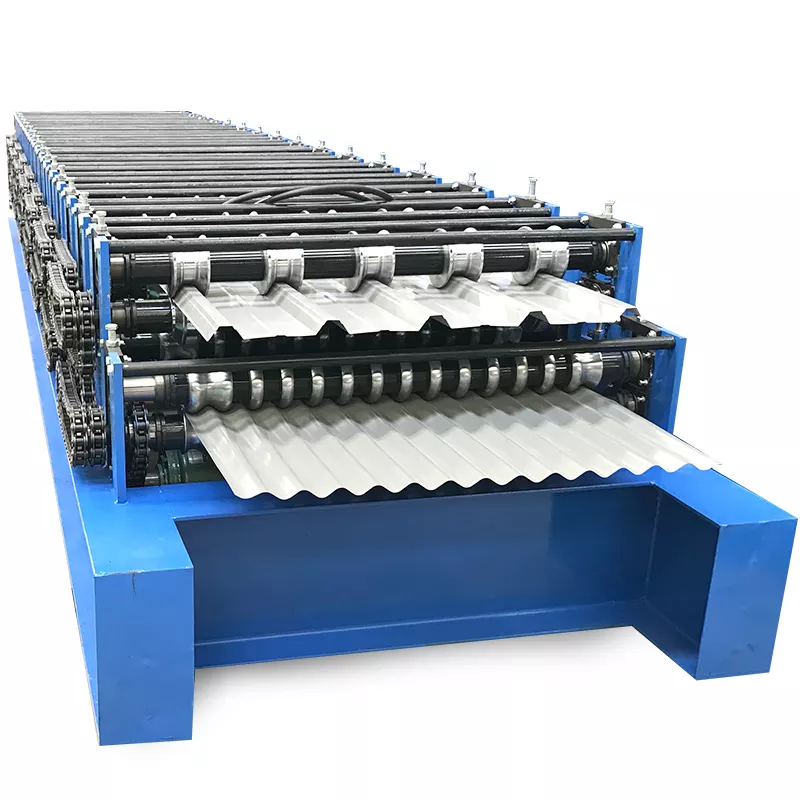
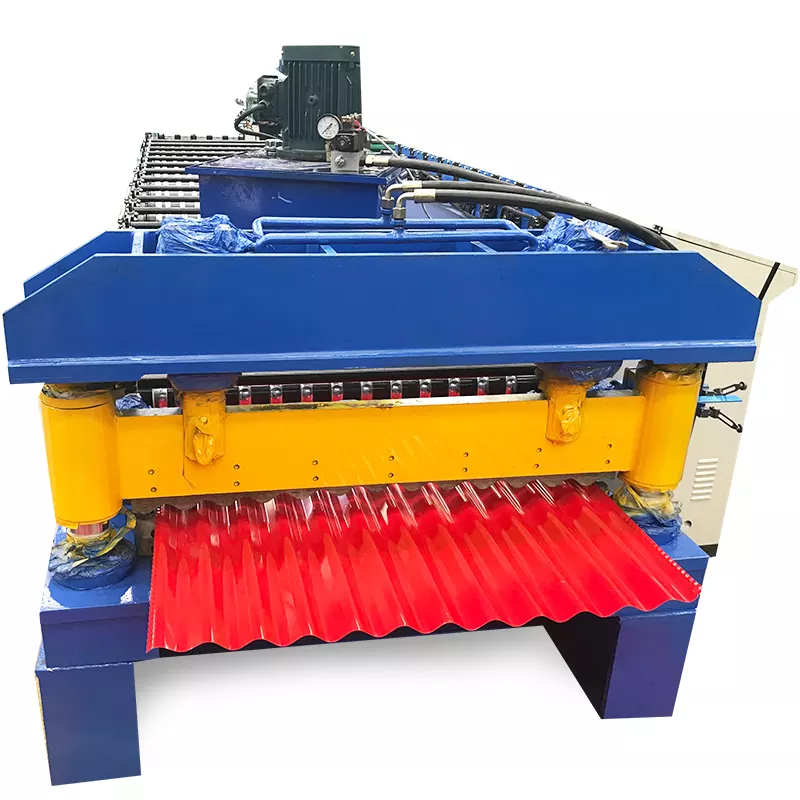
How does a metal roofing roll forming machine work?
When you are looking for a way to create a more durable roof, metal roofing roll forming machines are the perfect solution. These machines use high-quality materials and state-of-the-art technology to create a product that will withstand the elements and last for years to come.
Metal roofing is composed of multiple layers of metal, which are bonded together using heat and pressure. This process creates a much stronger product than traditional asphalt shingles. In addition, metal roofs are also much more resistant to fire, wind, and hail damage.
Roll forming machines can create various profiles and shapes, depending on your needs. This flexibility makes them ideal for both commercial and residential applications. Whether you need a simple standing seam roof or something more complex, a roll forming machine can create it.
Operating a roll forming machine is relatively simple. The first step is to load the coils of metal onto the machine. Next, the operator will select the desired profile and adjust the speed and tension settings. Finally, the machine will form the metal into the desired shape and cut it to length.
Benefits of using a metal roofing roll forming machine
There are many benefits of using a metal roofing roll forming machine. One benefit is that it can help you save money on your energy bills. Metal roofs are very good at reflecting heat and keeping your home cooler in the summer and warmer in the winter. This can lead to lower energy bills for you and your family.
Another benefit of using a metal roofing roll forming machine is that it can help increase the value of your home. Metal roofs are very durable and will last a long time if they are properly cared for. This means that if you ever decide to sell your home, you could get more money for it because buyers will know that they won’t have to replace the roof anytime soon.
Finally, using a metal roofing roll forming machine can also help protect your family from the elements. Metal roofs are great at deflecting wind, rain, and hail. This means that your home will be better protected against severe weather conditions. And, if there ever is any damage to your roof, it will be much easier to repair than if it were made out of another material like asphalt shingles.
-
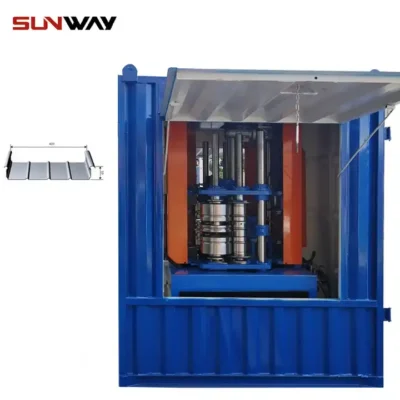 Standing Seam Roof Panel Curving Machine
Standing Seam Roof Panel Curving Machine -
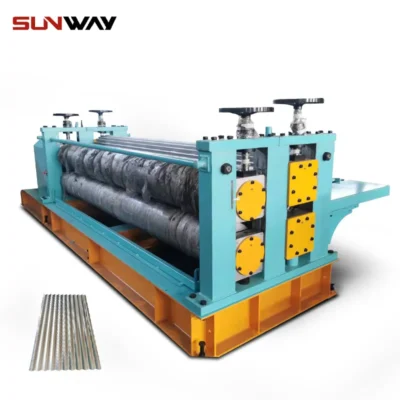 Barrel Corrugated Roll Forming Machine
Barrel Corrugated Roll Forming Machine -
 Hydraulic Roof Sheet Curving Machine
Hydraulic Roof Sheet Curving Machine -
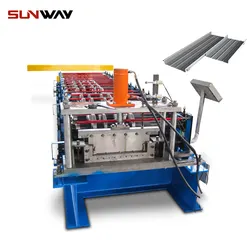 Stand Seaming Roof Panel Roll Forming Machine
Stand Seaming Roof Panel Roll Forming Machine -
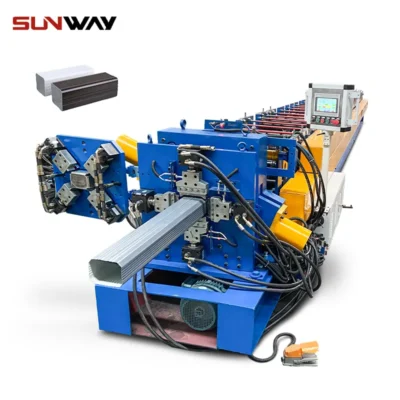 Downspout Pipe Roll Forming Machine
Downspout Pipe Roll Forming Machine -
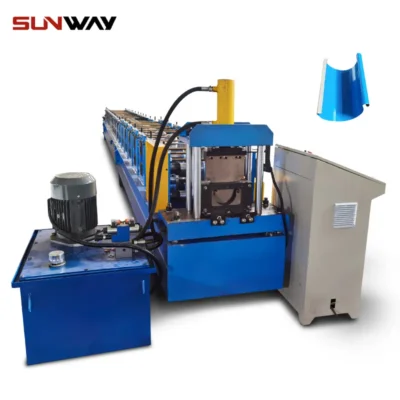 Gutter Roll Forming Machine
Gutter Roll Forming Machine -
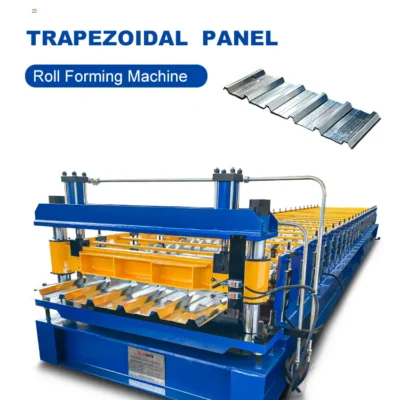 Trapezoidal Panel Roll Forming Machine
Trapezoidal Panel Roll Forming Machine -
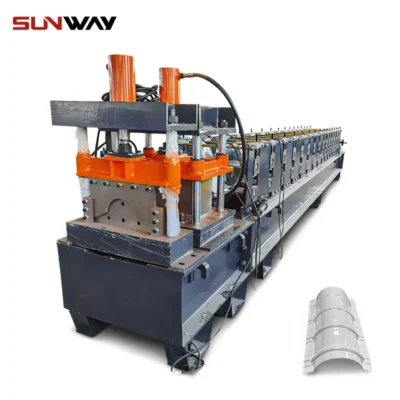 Ridge Cap Roll Forming Machine
Ridge Cap Roll Forming Machine -
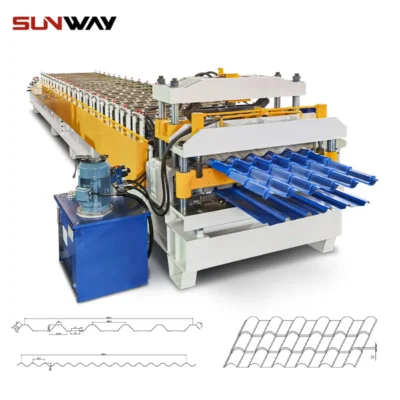 Double Layer Panel Roll Forming Machine
Double Layer Panel Roll Forming Machine
Ways to Care for a Metal Roofing Roll Forming Machine
A metal roofing roll forming machine can be a great investment for any business or homeowner. There are many benefits to using one of these machines, but it is important to care for them properly in order to keep them running smoothly. Here are some tips on how to care for your metal roofing roll forming machine:
- Keep the machine clean. This means regularly cleaning the exterior of the machine as well as the interior components. A build-up of dirt and debris can cause the machine to malfunction.
- Lubricate the moving parts. It is important to lubricate the moving parts of the machine on a regular basis in order to keep them from wearing down prematurely.
- Inspect the machine regularly. Be sure to inspect all aspects of the machine regularly in order to identify any potential problems early on. This will help you avoid costly repairs or replacements down the road.
- Store the machine properly when not in use. When you are not using your metal roofing roll forming machine, be sure to store it in a dry, safe place out of direct sunlight and away from extreme temperatures.
By following these simple tips, you can keep your metal roofing roll forming machine in good condition for many years to come!

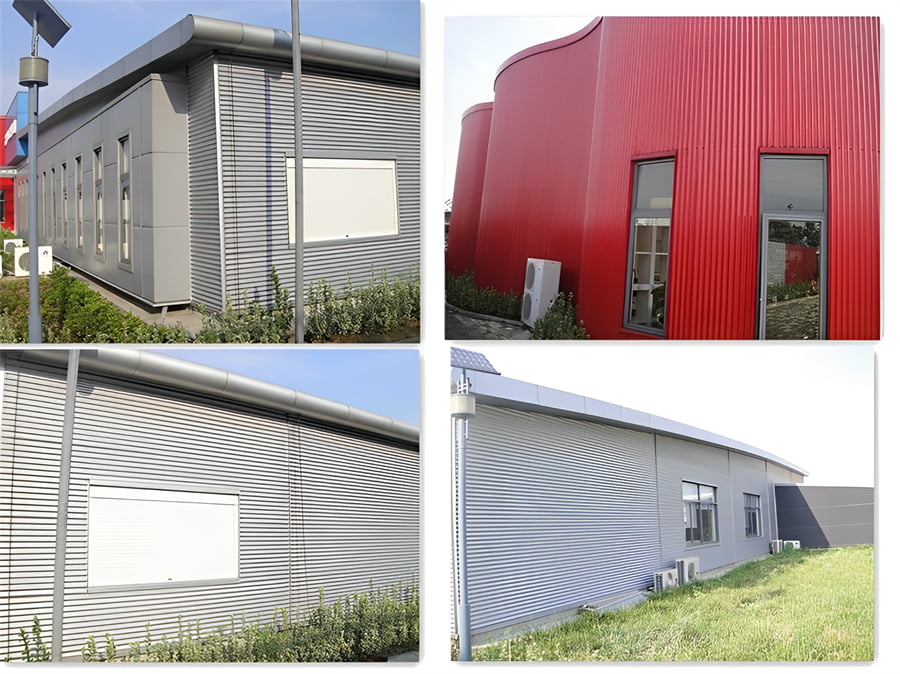
Conclusion
A metal roofing roll forming machine can be a great investment for any business that produces metal roofs. The benefits of using a machine are numerous, from increased production efficiency to improved product quality. If you are considering purchasing a metal roofing roll forming machine, be sure to weigh the pros and cons carefully to make sure it is the right decision for your business.
FAQ
What is the standard size of metal roofing sheets?
The standard galvanized sheet would come in a standard 26″ wide sheet, with lengths of 8′, 10′, & 12′ long.
Frequently Asked Questions (FAQ)
1) What profiles can a Metal Roofing Roll Forming Machine produce?
- Common profiles include trapezoidal (R-panel), corrugated, standing seam, ribbed/box, tile-step, and ridge cap. With cassette tooling, one line can switch between roof and wall panels.
2) What tolerances are typical on roofing panels from roll forming?
- Standard lines hold ±0.5–0.8 mm on cut length and ±0.3–0.6 mm on panel width. Best-in-class servo/electric machines with high‑resolution encoders achieve ±0.25–0.4 mm on length.
3) How fast can a metal roofing roll forming machine run?
- For 0.4–0.8 mm prepainted steel, typical speeds are 20–45 m/min. With rotary punching/embossing buffers, premium lines reach 50–80 m/min, subject to profile complexity and coating protection.
4) Which materials and coatings are recommended for durability and energy performance?
- Prepainted galvanized steel (EN 10346 Z275+), AluZinc/Galvalume (AZ150+), Zn‑Al‑Mg (ZAM) for corrosion resistance, and PVDF or SMP coatings for UV stability. Cool roof pigments can reduce roof surface temperature by 10–20°C versus conventional paints.
5) What maintenance has the biggest impact on panel quality?
- Routine roll cleaning and alignment checks, blade sharpening/clearance verification, encoder calibration, and decoiler brake inspection. Keeping roll surface finish at Ra ≤ 0.2 μm prevents paint marring on prefinished coils.
2025 Industry Trends
- Electrification and efficiency: All‑electric stands and regenerative drives deliver 8–15% lower kWh per 1,000 m² and tighter cut accuracy compared with hydraulic systems.
- AI vision QA: Real‑time detection of oil‑canning, rib depth, and edge waviness reduces rework by 25–40% at line speeds >30 m/min.
- Sustainable materials: Accelerating adoption of ZAM substrates and high‑reflectance PVDF “cool roof” coatings for longer life and energy savings.
- Rapid changeover: Cassette tooling and recipe libraries cut changeover to 10–25 minutes, enabling more SKUs without throughput loss.
- Safety and compliance: Wider use of ISO 13849 PL assessments, light curtains at cutoff, and lockout/tagout digitized procedures.
2025 Benchmarks for Metal Roofing Roll Forming Machines
| KPI (0.5–0.8 mm PPGI) | 2023 Typical | 2025 Best-in-Class | Key Enablers |
|---|---|---|---|
| Line speed (no punching) | 25–40 m/min | 50–80 m/min | All-electric drives, precision feeders |
| Line speed (with punching/emboss) | 15–30 m/min | 35–55 m/min | Rotary punching, accumulator loops |
| Cut length accuracy (3σ) | ±0.7 mm | ±0.25–0.4 mm | Servo feed + 20–40k ppr encoders |
| Panel width stability (3σ) | ±0.6 mm | ±0.3–0.4 mm | Closed-loop stand calibration |
| Changeover time (cassette) | 45–90 min | 10–25 min | Cassette tooling, recipe presets |
| Scrap rate | 2–4% | 1–2% | AI vision, SPC, coil QC |
| Energy (kWh per 1,000 m²) | 260–320 | 210–260 | Regenerative drives, smart idle |
References and guidance:
- EN 10346 coated steels: https://standards.cen.eu
- CFSEI/AISI cold-formed steel resources: https://www.cfsei.org/resources
- U.S. EIA industrial energy data: https://www.eia.gov
- ISO 13849 and ISO 14120 machine safety: https://www.iso.org
Latest Research Cases
Case Study 1: Vision-Guided Standing Seam Accuracy Upgrade (2024)
- Background: A North American fabricator reported inconsistent lock-seam engagement at 32 m/min on a standing seam profile made from 0.6 mm PVDF-coated steel.
- Solution: Added dual-camera vision to monitor rib height and pan flatness, integrated closed-loop roll-gap micro-adjustments, and synchronized rotary shear with higher-resolution encoder feedback.
- Results: Rework fell 41%, lock-seam complaints dropped by 70%, and line speed increased to 38 m/min without accuracy loss.
Case Study 2: All-Electric Retrofit Lowers Energy and Noise (2025)
- Background: An EU roofing panel producer sought lower operating costs and compliance with new plant noise limits.
- Solution: Replaced hydraulic power packs with servo-electric stands and servo cutoff, implemented regenerative braking, and added an acoustic enclosure around the shear zone.
- Results: Energy intensity reduced 12% (kWh/1,000 m²), operator station noise reduced by 6–8 dB(A), and unplanned downtime decreased 20% due to elimination of hydraulic maintenance.
Expert Opinions
- Dr. Hannah Ruiz, Materials Scientist, National Institute for Building Envelopes
- “Selecting coils with tight yield strength and thickness tolerances is the fastest path to fewer on-line adjustments. Pair ZAM or AZ coatings with PVDF cool pigments to extend service life and boost energy performance.”
- Michael Sung, Director of Automation, Apex Rollforming Systems
- “For Metal Roofing Roll Forming Machine lines running many SKUs, invest in cassette tooling plus recipe-driven servo calibration. Most customers recoup the cost through 30–50% shorter changeovers.”
- Laura Petrov, Senior Safety Engineer, EuroMach Compliance
- “A documented ISO 13849 PLr assessment with correctly placed light curtains and interlocked guards near the cutoff is now a de facto requirement for CE and customer audits.”
Practical Tools/Resources
- AISI/CFSEI Technical Notes for cold-formed steel roof panels: https://www.cfsei.org/resources
- EN 10346 (galvanized/AluZinc/ZAM) standard access: https://standards.cen.eu
- Cool roof technical information (CRRC): https://coolroofs.org
- Online coil weight/length calculators: https://www.onlinemetals.com/en/calculators
- GHG Protocol tools for Scope 2/3 tracking: https://ghgprotocol.org
- OSHA machine guarding and LOTO references: https://www.osha.gov/machine-guarding
- U.S. EIA manufacturing energy benchmarking: https://www.eia.gov
Last updated: 2025-10-21
Changelog: Added 5 new FAQs, 2025 trends with KPI table and references, two recent case studies, expert insights, and practical resources for Metal Roofing Roll Forming Machine buyers and operators
Next review date & triggers: 2026-04-21 or earlier if safety standards (ISO 13849/14120) update, coated steel specs (EN 10346/ZAM) change, or AI vision QA adoption materially alters benchmark KPIs
